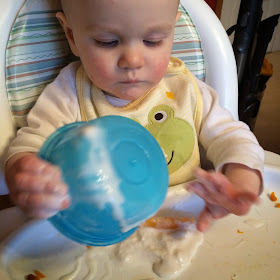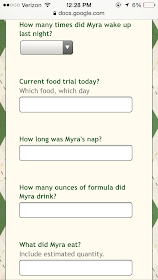I have been very excited to both read and publish this post. I have spent the last 10 years involved in the feminist movement in some capacity or another, so this is a cause very near and dear to me. I know so many women, some very close to me, who have been affected by violence, oppression, and privilege (or lack thereof). Actually, all women have been affected in one way or another by at least one of those things. I am so very grateful to my friend Nikki for writing this Causes series guest post for Women's History Month and I loved reading what she had to say. This stuff is real and it is important; it matters. Note: I am often reminded there is some confusion around the word "feminism;" while there are many definitions out there, Merriam-Webster simply defines it as: "1) the belief that men and women should have equal rights and opportunities and 2) organized activity in support of women's rights and interests."
-->
Like every instructor worth her
salt, I ask my Introduction to Women’s Studies students to evaluate the course
at the end of every semester. Specifically, I ask them: what texts/content
should I keep in the next iteration of the class and what should I cut? Without
fail, two items come up as “keepers,” semester after semester: Iron Jawed Angels and the “Violence
Against Women” unit.
In case you haven’t seen it, Iron Jawed Angels is a 2004 film by Katja
von Garnier, starring Hilary Swank, Frances O'Connor, Julia Ormond, and
Anjelica Huston. It portrays - with a fairly good degree of accuracy - the
later stages of the women’s suffrage movement in the United States.
-->
My students love this film. First,
they love it because it is a good film and it does what all really good films
do: it makes you feel something. My students like these women; von
Garnier makes these suffragists relatable
to college-age men and women, which is no easy feat! Second, this film surprises
my students, because the history this film portrays is a history they don’t know.
Why don’t we know this history? they ask me. Good question. This film forces my
students to wrangle with several arguments feminists make about traditional
history: 1) that the history we get is inadequate
as it fails to portray women’s lives with any degree of depth or complexity,
and 2) that the history we get is biased
in that it fails to tell the truth about women’s lives and women’s work.
Women’s suffrage is probably one
of the few bits of “women’s history” most of us do get in school, of course. If your education was anything like
mine, you were told a very abridged story that focused on a couple of figures –
Susan B. Anthony and Elizabeth Cady Stanton - and ended with the notion that
American women were given the right to vote in 1920 as a “thank you” for their
patriotic efforts in World War I. (If your elementary, middle, or high school
education was more robust than this I would love to hear about it in the
comments!)
The unabridged story of the fight
for women’s suffrage is much more interesting, rich, and complicated than that
brief blurb in our elementary history textbooks. Establishing women’s right to
vote was a fight that took over 70 years. Suffragists’ strategies were
wide-ranging: from staging elaborate protests, pickets, and marches, to lobbying
politicians. They were assaulted in public, verbally and physically. Suffragists
were arrested on trumped up charges and imprisoned. Their personal and private
lives suffered as a result of their political activism, and their refusal to
conform to traditional women’s roles and behavior came at great personal cost. Suffragists
disagreed with one another; they were divided over strategy and around issues
of race and class. Suffragists were white and African-American, women and men. Suffragists
were brave. Determined. Intelligent. Capable. Flawed. Suffragists were heroic. So why don’t we – as a nation -
see them this way: as heroes who changed the face of citizenship in the United
States by enfranchising 50% of the population?
Can’t women be heroes too?
-->
To reduce the story of suffrage to
a story of a few great ladies who politely asked for a thing until they got it…
a story of well-meaning men who, when they knew better, did better, is to do
women’s history – and to do women - a great disservice. It is also a lie. As Martin
Luther King, Jr. stated: “Freedom is never voluntarily given by the oppressor;
it must be demanded by the oppressed" (1963).
It matters whether our history textbooks say that women were given the right to vote in 1920 by kind,
well-meaning men, or whether the textbooks say women fought and won the right to vote in 1920 in spite of decades of intense
social and political opposition. It matters
whether Women’s History month is observed in our schools with all due
diligence and a robust curriculum or whether it is a few photos on a wall and a
lot of lip service. It matters because
the histories we are teaching our children send them clear messages about what
women are (and are not) capable of, as well as conveying ideas about women’s
value:
Are our girls capable of being our nation’s soldiers,
heroes, innovators, visionaries, political leaders, inciters, and myth-makers?
Or are they capable “only” of being the girlfriends, wives, and mothers of the
nation’s soldiers, heroes, innovators, visionaries, political leaders,
inciters, and myth-makers?
Are women valued in our culture? Do we recognize,
memorialize, and compensate women’s contributions to our families, our
communities, our economies, and our nation?
Let me be clear:
there is, of course, nothing wrong with being “only” a girlfriend, wife, and
mother. These are roles with immense
social, economic, and political value. Fact: the nation would cease to function
if women stopped performing these roles. The problem is that we tell women and
girls that these are the most important roles they can have and then we, as a
society, do not support women in these roles. For example: if we truly valued
the mothering work women do, wouldn’t mandatory paid maternity leave exist in
the US by now? Comparing Paid Maternity Leave Around the World.
Feminists argue that the
inadequate and inaccurate stories we tell – in our media, in our popular
discourse, in our histories, in our national holidays and memorials – are
stories which teach our children that women are not capable of anything truly
interesting and noteworthy, and what they are capable of (mothering and other
forms of care work) holds little value in the grand scheme of things. This must
change.
It is not surprising to me that
the unit on violence against women also deeply affects my intro students. If
they are surprised and bewildered by what they don’t know of US women’s
history, they are shocked and infuriated to learn of the rates of violence
against women in the US and our society’s inability (unwillingness?) to affect real
change in this area. How are these numbers possible? they ask me.
How can our justice system fail
women so badly? they want to know.
It’s my job to help them to see
the connections. There is a connection to be made here, between the misrepresentations
of history, women’s low social worth, and violence against women. When women and
girls are not seen as agents and individuals in their own right (when they are
seen solely as wives and mothers, beings whose identity revolves around their
relationship to someone else), and when their contributions to social,
political, and economic life are de-valued, it
is easier to do violence to them. When women don’t matter – when their
lives are not important enough to make it into our histories, our national
myths, our educational system – then it is easier to hurt them and easier to
get away with hurting them. These seemingly disparate issues are connected.
Women’s history, women’s stories,
women’s lives matter. This month and every month.
Written by: Nikki
Frances -- Feminist mama to one small girl, hoping to change the world
for her. I have an MA in Women’s Studies and am currently an instructor
of Gender and Women’s Studies at Minnesota State University Mankato.

































